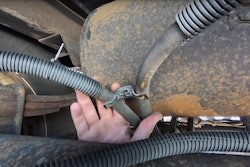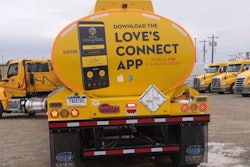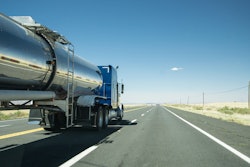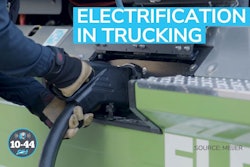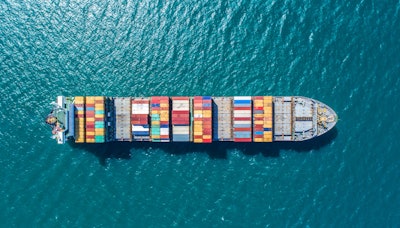
Turns out, standards are absolutely useful in making innovation happen. Go figure.
A little history tour: Malcolm McLean started out as a truck driver, buying one used truck and starting a trucking company. In time, he had a vision of revolutionizing freight transportation. His vision became the ubiquitous shipping containers and all the infrastructure tied to them.
Along the way, he had help from industry icons like Roy Fruehauf and his company, and industry standards organizations such as the International Organization for Standardization (ISO). If you are not familiar with the story, it’s worth the time to web-surf as it is a great example of a fledgling disruptive technology moving the bar on freight industry status quo.
McLean started in the early 1950s purchasing and reconfiguring old World War II tankers to become the pilot container ships. McLean and Fruehauf developed the initial pool of 58 containers, which were the first to be loaded on the converted tankers and put into service in 1956. Patents were obtained for the many aspects of the container and chassis system.
The market started seeing potential in handling more freight in less time and at less cost. In 1965, ISO began work recommending the McLean-Fruehauf container as a global standard.
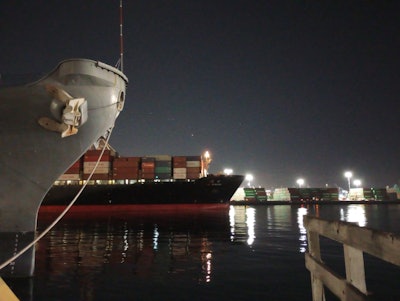 The current standard for ocean going containers includes 20 foot and 40 foot per ISO 668:2020. The U.S. and Canadian intermodal industry introduced and standardized on 45, 48 and 53 foot containers specifically for North American road and rail movement comparable to trailer sizes used with tractor-trailers.Rick Mihelic
The current standard for ocean going containers includes 20 foot and 40 foot per ISO 668:2020. The U.S. and Canadian intermodal industry introduced and standardized on 45, 48 and 53 foot containers specifically for North American road and rail movement comparable to trailer sizes used with tractor-trailers.Rick Mihelic
According to Fruehauf's website, in 2006 – the 50th anniversary of the McLean-Fruehauf container – container ships carried some 60% of all ocean-going freight. The U.S. Bureau of Transportation Statistics (BTS), states that between 2015 and 2020, the top 25 U.S. container ports handled a total of 39.8 million TEUs. A TEU is a 20-foot equivalent unit — the measurement metric for ocean-going containers. The Intermodal Association of North America (IANA) estimates there are some 600 million shipping containers in use worldwide.
The original Fruehauf container was 35 foot. During the early years, there were multiple container sizes in use. The multiple competing sizes complicated industry adoption and slowed realization of the system-wide benefits of container use. Over a series of a few short years (1968 to 1970), ISO recommended a series of standards, which evolved into globally accepted container standards.
The current standard for ocean going containers includes 20 foot and 40 foot per ISO 668:2020. The U.S. and Canadian intermodal industry introduced and standardized on 45, 48 and 53 foot containers specifically for North American road and rail movement comparable to trailer sizes used with tractor-trailers. The original vision of a “one size fits all” 35 foot container system has evolved into these multiple types and sizes. The height of containers also has developed into two permutations, 8.6 and 9.6 foot high cube. There are also specific types with tanks, refrigeration and more.
Standardization of shipping containers has enabled the seamless transfer of freight across the world. A few lessons learned from this container history tour that are relevant to the many new technologies facing trucking: standards can accelerate market adoption; standards can change and evolve; standards do not necessarily hinder innovation; and standardization can be very profitable across an industry.
New companies may not have backgrounds in standards, and may even fear them. I volunteer on various standards efforts by SAE and other groups and constantly wonder why more company management teams are not more aggressively engaged in standards efforts.
I believe that company chief engineers and executives have a significant role in helping their organizations understand the value of standards and actively help their organizations participate in creating and updating them. There seems to be a breakdown in communication between the subject matter experts at companies and the businesspeople focused on economics that is failing to properly assign value to supporting standards efforts.
Accountants have difficulty estimating cost savings or profit potential from an employee participating in a standards effort. It’s not like knowing to the penny what an hour of production line labor produces, or the cost/benefit of a single fastener, but the value can be significant. Participation can reduce company inventory, development and operating costs. It can open new markets and increase production volume.
Standards for battery packs, hydrogen fuel tanks, fuel cells, high voltage connectors, software for charging systems, for fueling/charging station design, etc. all have the potential to allow increased volumes critically needed to drive down production, operating and retail costs. Those standards may also lead to harmonization in related technologies just as the container led to port infrastructure, ship and rail car commonization as well as warehouse and factory factors.
As today’s freight industry is looking at disruptive zero-emission vehicles, autonomous vehicles and other technologies, the example of McLean and Fruehauf introducing containerized shipping shows the value of participating in standards efforts.
For more information on the McLean-Fruehauf story read The Box: How the Shipping Container Made The World Smaller and the World Economy Bigger.



